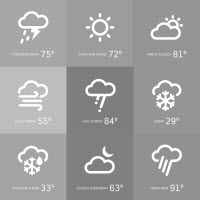Under Public Comment, Realtor Bonnie Jessee asked how to get the sewer situation resolved and stated the Cox & Cox contractors probably have plans and that Craig McHenry and Brooks Mitchell had not responded. She said she’s lost two potential new household buyers. Mayor Mark Marin thought there should be a map.
Brooks explained they can’t go on private property with a camera and scope. Potential buyers need to do that and there is a map of water and sewer. Bonnie called the need, “crucial.” Jason VanDaam, in the audience, said he’s gotten it for the property he’s just bought. Bonnie stated this is the only county that doesn’t require the seller to have sewer lines checked prior to sale, making it a guarantee.
Brooks stated he’d gotten a request on dealing with water bills and the right of the public as to hook ups and the list and amounts owed.
Also in the audience, Mark Lombardi was trying to understand City finances, and submitted a list of questions.
Under question, Brooks stated the City set up a plan for those behind, to pay 1.5 times the water rate when $167,000 was owed in back water bills. Now it’s $300,000 and he admitted the biggest problem was the trailer park and they haven’t made progress.
Sierra County’s Office of Emergency Services Officer Lee Brown was there to discuss contacts for emergency funding and he stated Downieville’s PUD shut people off.
Brooks told how the Council had voted to give 90 days for shut off at the trailer park yet the legal opinion said to review.
Lombardi thought that “not sound advice.” He told how the supervisors were having a 9 a.m. week day meeting nobody would attend and get nothing done. He urged the Council to be a “leader not follower.” He continued, “Take a leadership role for what’s good for Loyalton.” He questioned, “What can they do?”
Brooks agreed and suggested they agendize it for the next meeting for a 14-day water shut off notice. There was further discussion on how the lines are all hooked together with only some paying their bill. Brooks talked of having to have a solution and disconnecting laterals.
In the audience, Don Yegge told of no maps and to shut others off would require work on private property. Lombardi thought they were compounding the problem and urged them to do what’s best for the city and to quit being pushed around.
City Clerk Tracy Smith agreed.
Lee Brown’s agendized item discussed designated contacts for FEMA/OES with a kick-off meeting to be announced to look at projects. Small projects are those $3,100 - $123,000 and large projects, those over $123,000. Lee said he’d be happy to come when scheduled.
Brooks talked of road damage and Lee stated it would be a direct result of disaster within the jurisdiction with pictures prior to the storm. Decisions can be appealed and funding is 75% federal, 18.75% state and 6.25% city. If the project runs under, they’re allowed to keep FEMA funds but not by the State. Donated material and labor can go toward the 6.25% and allow administrative costs 1-10% per project with a functional time card.
Lee also told of an Environmental Historical Preservation Act which has to be approved.
Concerning road shoulders and pavement, there is a service category for debris removal and a category for emergency work and permanent work. If contractors are hired, state law kicks in prevailing wage. Lee called it “lots of red tape.” A recovery team will come up and meet and Lee suggested Bryan Davey to help in engineering. A resolution was adopted as a formality.
